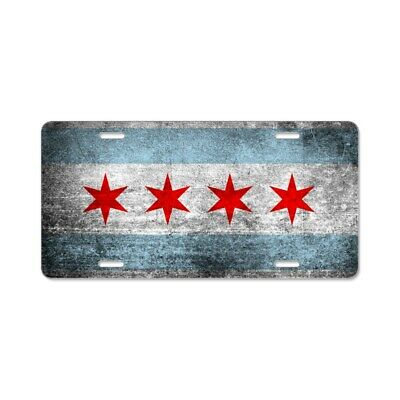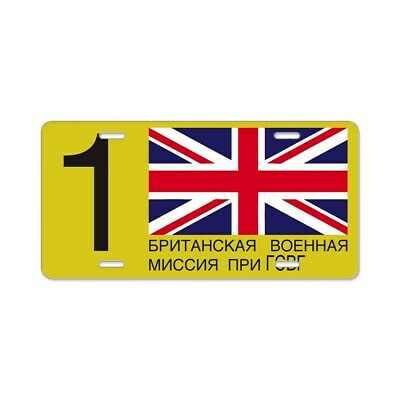-40%
new Wizard of Oz METAL SIGN - Emerald City Parking for fans of the Wicked Witch
$ 10
- Description
- Size Guide
Description
Your browser does not support JavaScript. To view this page, enable JavaScript if it is disabled or upgrade your browser.Click Here. Double your traffic. Get Vendio Gallery - Now FREE!
I am happy to put forth this beautiful item for sale.
You are bidding on one BRAND NEW aluminum metal tin sign
.....
It is
a brand new metal tin sign that would be very
much
enjoyed indeed by
any home .
The sign is unopened
and still in the original shrink-wrap.
I image this sign hanging in the
den of a fan
,
or ou
t
si
de in his/her favorite parking place
or better yet in your Movie Room.
It is a hoot. I was made here in the USA , and it measures
8 inches by 12 inches in size.
It in an
Embossed Aluminum Sign .
I hope this finds a nice home.
Thank you , Harry
fun facts from wikipedia..
The Wizard of Oz
(1939 film)
From Wikipedia, the free encyclopedia
This article is about the 1939 film. For other uses, see
The Wizard of Oz (disambiguation)
.
The Wizard of Oz
Theatrical release poster
Directed by
Victor Fleming
Produced by
Mervyn LeRoy
Screenplay by
Noel Langley
Florence Ryerson
Edgar Allan Woolf
Based on
The Wonderful Wizard of Oz
by
L. Frank Baum
Starring
Judy Garland
Frank Morgan
Ray Bolger
Bert Lahr
Jack Haley
Billie Burke
Margaret Hamilton
Charley Grapewin
Music by
Herbert Stothart
Harold Arlen
Cinematography
Harold Rosson
Edited by
Blanche Sewell
Distributed by
Metro-Goldwyn-Mayer
Release dates
August 15, 1939
Running time
101 minutes
Country
United States
Language
English
Budget
,777,000
[
1
]
Box office
,017,000
(original release)
[
1
]
,342,633
(unadjusted, re-releases)
7,088,371
(adjusted 2014)
The Wizard of Oz
is a 1939 American
musical
fantasy film
produced by
Metro-Goldwyn-Mayer
, and the most well-known and commercially successful adaptation based on the 1900 novel
The Wonderful Wizard of Oz
by
L. Frank Baum
.
[
2
]
The film stars
Judy Garland
;
Terry
the dog, billed as Toto;
Ray Bolger
,
Jack Haley
,
Bert Lahr
,
Frank Morgan
,
Billie Burke
,
Margaret Hamilton
, with
Charley Grapewin
and
Clara Blandick
, and the
Singer Midgets
as the
Munchkins
, with
Pat Walshe
as leader of the flying monkeys.
[
3
]
Notable for its use of
Technicolor
, fantasy storytelling, musical score and unusual characters, over the years it has become one of the best-known films and part of American popular culture. It was a box office disappointment on its initial release, earning only ,017,000 on a ,777,000 budget, despite receiving largely positive reviews.
[
1
]
[
4
]
The film was MGM's most expensive production at that time, and did not recoup much of the studio's investment until subsequent re-releases.
[
5
]
It was nominated for six Academy Awards, including
Best Picture
but lost to
Gone with the Wind
. It did win in two other categories including
Best Original Song
for "
Over the Rainbow
". The song was ranked first in two lists: the
AFI's 100 Years...100 Songs
and the
Recording Industry Association of America
's "
365 Songs of the Century
".
The 1956
broadcast television premiere of the film
on CBS re-introduced the film to the public that eventually made it an annual tradition and one of the most known films in cinema history.
[
2
]
The film was named the most-viewed motion picture on television syndication by the
Library of Congress
who also included the film in its
National Film Registry
in its inaugural year in 1989. Designation on the registry calls for efforts to preserve it for being "culturally, historically, and aesthetically significant".
[
6
]
It is often ranked on
best-movie lists
in critics' and public polls. It is the source of many quotes referenced in modern
popular culture
. It was directed primarily by
Victor Fleming
(who left production to take over direction on the troubled
Gone with the Wind
production).
Noel Langley
, Florence Ryerson and Edgar Allan Woolf received credit for the screenplay, but there were uncredited contributions by others. The songs were written by
Edgar "Yip" Harburg
(lyrics) and
Harold Arlen
(music). The incidental music, based largely on the songs, was composed by
Herbert Stothart
, with interspersed renderings from classical composers.
Sleeping Beauty
(1959 film)
From Wikipedia, the free encyclopedia
Sleeping Beauty
Original theatrical poster
Directed by
Clyde Geronimi
Les Clark
Eric Larson
Wolfgang Reitherman
Produced by
Walt Disney
Written by
Erdman Penner (adaptation)
Joe Rinaldi
Winston Hibler
Bill Peet
Ted Sears
Ralph Wright
Milt Banta
Based on
La Belle au bois dormant
by
Charles Perrault
The Sleeping Beauty
by
Pyotr Ilyich Tchaikovsky
Little Briar Rose
by
The Brothers Grimm
Starring
Mary Costa
Eleanor Audley
Verna Felton
Barbara Luddy
Barbara Jo Allen
Bill Shirley
Taylor Holmes
Bill Thompson
Narrated by
Marvin Miller
Music by
George Bruns
Production
company
Walt Disney Productions
Distributed by
Buena Vista Distribution
Release dates
January 29, 1959
Running time
75 minutes
Language
English
Budget
million
[
1
]
Box office
.6 million
[
2
]
Sleeping Beauty
is a 1959 American animated
musical
fantasy film
produced by
Walt Disney
based on
The Sleeping Beauty
by
Charles Perrault
and
Little Briar Rose
by
The Brothers Grimm
. The 16th film in the
Walt Disney Animated Classics series
, it was released to theaters on January 29, 1959, by
Buena Vista Distribution
. This was the last Disney adaptation of a fairy tale for some years because of its initial
disappointing box office gross
and mixed critical reception; the studio did not return to the genre until 30 years later, after Walt Disney died, with the release of
The Little Mermaid
(1989).
The film was directed by
Les Clark
,
Eric Larson
, and
Wolfgang Reitherman
, under the supervision of
Clyde Geronimi
, with additional story work by Joe Rinaldi, Winston Hibler,
Bill Peet
,
Ted Sears
, Ralph Wright, and Milt Banta. The film's musical score and songs, featuring the work of the
Graunke Symphony Orchestra
under the direction of
George Bruns
, are arrangements or adaptations of numbers from the 1890
Sleeping Beauty
ballet
by
Pyotr Ilyich Tchaikovsky
.
Sleeping Beauty
was the first animated film to be photographed in the
Super Technirama 70
widescreen
process, as well as the second full-length animated feature film to be filmed in anamorphic widescreen, following Disney's own
Lady and the Tramp
four years earlier. The film was presented in
Super Technirama 70
and 6-channel stereophonic sound in first-run engagements.
The Princess and the Frog
From Wikipedia, the free encyclopedia
(Redirected from
Princess and the Frog
)
The Princess and the Frog
Theatrical release poster
Directed by
Ron Clements
John Musker
Produced by
Peter Del Vecho
John Lasseter
Screenplay by
Ron Clements
John Musker
Rob Edwards
Story by
Ron Clements
John Musker
Greg Erb
Jason Oremland
Don Hall
Based on
The Frog Princess
by
E. D. Baker
The Frog Prince
by
Brothers Grimm
Starring
Anika Noni Rose
Bruno Campos
Keith David
Michael-Leon Wooley
Jennifer Cody
Jim Cummings
Peter Bartlett
Jenifer Lewis
Oprah Winfrey
Terrence Howard
John Goodman
Music by
Randy Newman
Edited by
Jeff Draheim
Production
company
Walt Disney Pictures
Walt Disney Animation Studios
Distributed by
Walt Disney Studios
Motion Pictures
Release dates
November 25, 2009
(Los Angeles premiere)
December 11, 2009
(United States)
Running time
97 minutes
Country
United States
Language
English
Budget
5 million
[
1
]
Box office
7 million
[
2
]
The Princess and the Frog
is a 2009 American
animated
musical
romantic
fantasy-comedy film
produced by
Walt Disney Animation Studios
and released by
Walt Disney Pictures
. The 49th film in the
Walt Disney Animated Classics series
, the film is loosely based on the novel
The Frog Princess
by
E. D. Baker
, which is in turn based on the
Brothers Grimm
fairy tale "
The Frog Prince
". Written and directed by
Ron Clements
and
John Musker
, the film features an
ensemble voice cast
that stars
Anika Noni Rose
,
Bruno Campos
,
Keith David
,
Michael-Leon Wooley
,
Jennifer Cody
, and
Jim Cummings
, with
Peter Bartlett
,
Jenifer Lewis
,
Oprah Winfrey
,
Terrence Howard
, and
John Goodman
. Set in 1920s
New Orleans
,
Louisiana
, the film tells the story of a hardworking waitress named
Tiana
who dreams of owning her own restaurant. After kissing a prince who has been turned into a frog by an evil witch doctor, Tiana becomes a frog herself, and must find a way to turn back into a human before it is too late.
The Princess and the Frog
began production under the working title
The Frog Princess
. It marked Disney's return to
traditional animation
, as it was the studio's first traditionally animated film since
Home on the Range
(2004). Co-directors Ron Clements and John Musker, directors of Disney's highly successful films
The Little Mermaid
(1989) and
Aladdin
(1992), returned to Disney to direct
The Princess and the Frog
. The studio returned to a
Broadway musical
-style format frequently used by Disney in the 1980s and 1990s, and features music written by composer
Randy Newman
, well known for his musical involvement in
Pixar
films such as
A Bug's Life
(1998),
Monsters, Inc.
(2001),
Cars
(2006), and the
Toy Story
trilogy
(1995, 1999 and 2010).
The Princess and the Frog
opened in
limited release
in New York and Los Angeles on November 25, 2009, and in wide release on December 11, 2009.
The Princess and the Frog
was successful at the box-office, ranking first place on its opening weekend in North America, and grossing 7 million worldwide. The film received three
Academy Award
nominations at the
82nd Academy Awards
: one for Best Animated Feature and two for Best Original Song. It lost to
Up
and
Crazy Heart
, respectively.
[
3
]
It is the first 2-D animated Disney film not to be released on VHS. The film also marked the return of Disney animated musical films based on well-known stories since the
Disney Renaissance
.
The Wizard of Oz
(1939 film)
From Wikipedia, the free encyclopedia
(Redirected from
Wizard of oz (1939 movie)
)
This article is about the 1939 film. For other uses, see
The Wizard of Oz (disambiguation)
.
The Wizard of Oz (1939)
Theatrical release poster
Directed by
Victor Fleming
Produced by
Mervyn LeRoy
Screenplay by
Noel Langley
Florence Ryerson
Edgar Allan Woolf
Based on
The Wonderful Wizard of Oz
by
L. Frank Baum
Starring
Judy Garland
Frank Morgan
Ray Bolger
Bert Lahr
Jack Haley
Billie Burke
Margaret Hamilton
Charley Grapewin
Clara Blandick
Pat Walshe
Terry
Music by
Herbert Stothart
(score)
Harold Arlen
(songs: music)
E.Y. Harburg
(songs: lyrics)
Cinematography
Harold Rosson
Edited by
Blanche Sewell
Distributed by
Metro-Goldwyn-Mayer
Release dates
August 15, 1939
Running time
101 minutes
Country
United States
Language
English
Budget
,777,000
[
1
]
Box office
,017,000
(original release)
[
1
]
,342,633
(unadjusted, re-releases)
7,088,371
(adjusted 2014)
The Wizard of Oz
is a 1939 American
musical
fantasy film
produced by
Metro-Goldwyn-Mayer
, and the most well-known and commercially successful adaptation based on the 1900 novel
The Wonderful Wizard of Oz
by
L. Frank Baum
.
[
2
]
The film stars
Judy Garland
;
Terry
the dog, billed as Toto;
Ray Bolger
,
Jack Haley
,
Bert Lahr
,
Frank Morgan
,
Billie Burke
,
Margaret Hamilton
, with
Charley Grapewin
and
Clara Blandick
, and the
Singer Midgets
as the Munchkins, with
Pat Walshe
as leader of the flying monkeys.
[
3
]
Notable for its use of
Technicolor
, fantasy storytelling, musical score and unusual characters, over the years it has become one of the best-known films and part of American popular culture. It also featured in cinema what may be for the time the most elaborate use of character make-ups and special effects. It was not a
box office
success on its initial release, earning only ,017,000 on a ,777,000 budget, despite receiving largely positive reviews.
[
1
]
[
4
]
The film was MGM's most expensive production at that time, and did not recoup much of the studio's investment until subsequent re-releases.
[
5
]
It was nominated for six Academy Awards, including
Best Picture
but lost to
Gone with the Wind
. It did win in two other categories including
Best Original Song
for "
Over the Rainbow
." The song was ranked first in two lists: the
AFI's 100 Years...100 Songs
and the
Recording Industry Association of America
's "
365 Songs of the Century
".
The 1956
television broadcast of the film
re-introduced the film to the public that eventually made it an annual tradition and one of the most known films in cinema history.
[
2
]
The film was named the most-viewed motion picture on television syndication by the
Library of Congress
who also included the film in its
National Film Registry
in its inaugural year in 1989. Designation on the registry calls for efforts to preserve it for being "culturally, historically, and aesthetically significant".
[
6
]
It is often ranked on
best-movie lists
in critics' and public polls. It is the source of many quotes referenced in modern
popular culture
. It was directed primarily by
Victor Fleming
(who left production to take over direction on the troubled
Gone With the Wind
production).
Noel Langley
, Florence Ryerson and Edgar Allan Woolf received credit for the screenplay, but there were uncredited contributions by others. The songs were by
Edgar "Yip" Harburg
(lyrics) and
Harold Arlen
(music). The incidental music, based largely on the songs, was composed by
Herbert Stothart
, with interspersed renderings from classical composers.
The Emerald City of Oz
From Wikipedia, the free encyclopedia
The Emerald City of Oz
First edition design
Author
L. Frank Baum
Illustrator
John R. Neill
Country
United States
Language
English
Series
The Oz Books
Genre
Children's novel
Publisher
Reilly & Britton
Publication date
1910
Media type
Print (hardcover)
ISBN
NA
Preceded by
The Road to Oz
Followed by
The Patchwork Girl of Oz
The Emerald City of Oz
is the sixth of
L. Frank Baum
's fourteen
Land of Oz
books. It was also adapted into a Canadian animated film in 1987. Originally published on July 20, 1910, it is the story of
Dorothy Gale
and her Uncle Henry and Aunt Em coming to live in Oz permanently. While they are toured through the
Quadling Country
, the
Nome King
is assembling allies for an invasion of Oz. This is the first time in the Oz series that Baum made use of double plots for one of the books.
[
1
]
Baum had intended to cease writing Oz stories with this book, but financial pressures prompted him to write and publish
The Patchwork Girl of Oz
, with seven other Oz books to follow.
[
2
]
The book was dedicated to "Her Royal Highness Cynthia II of Syracuse" — actually the daughter (born in the previous year, 1909) of the author's younger brother, Henry Clay "Harry" Baum.
Your browser does not support JavaScript. To view this page, enable JavaScript if it is disabled or upgrade your browser.









